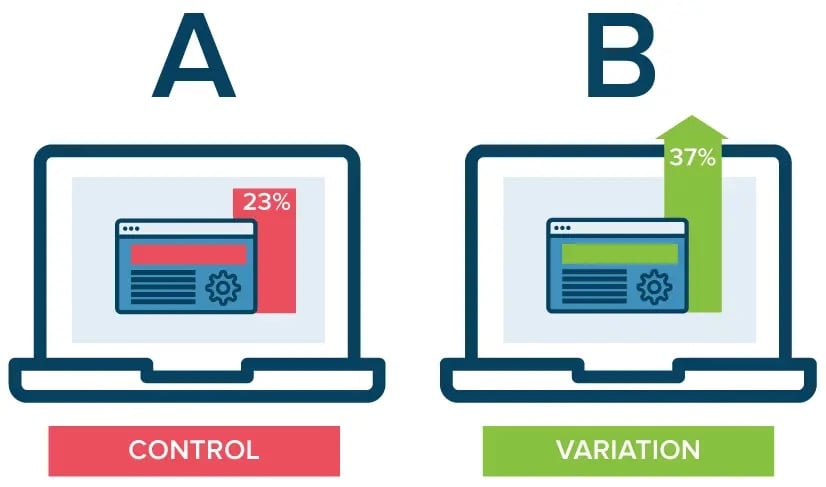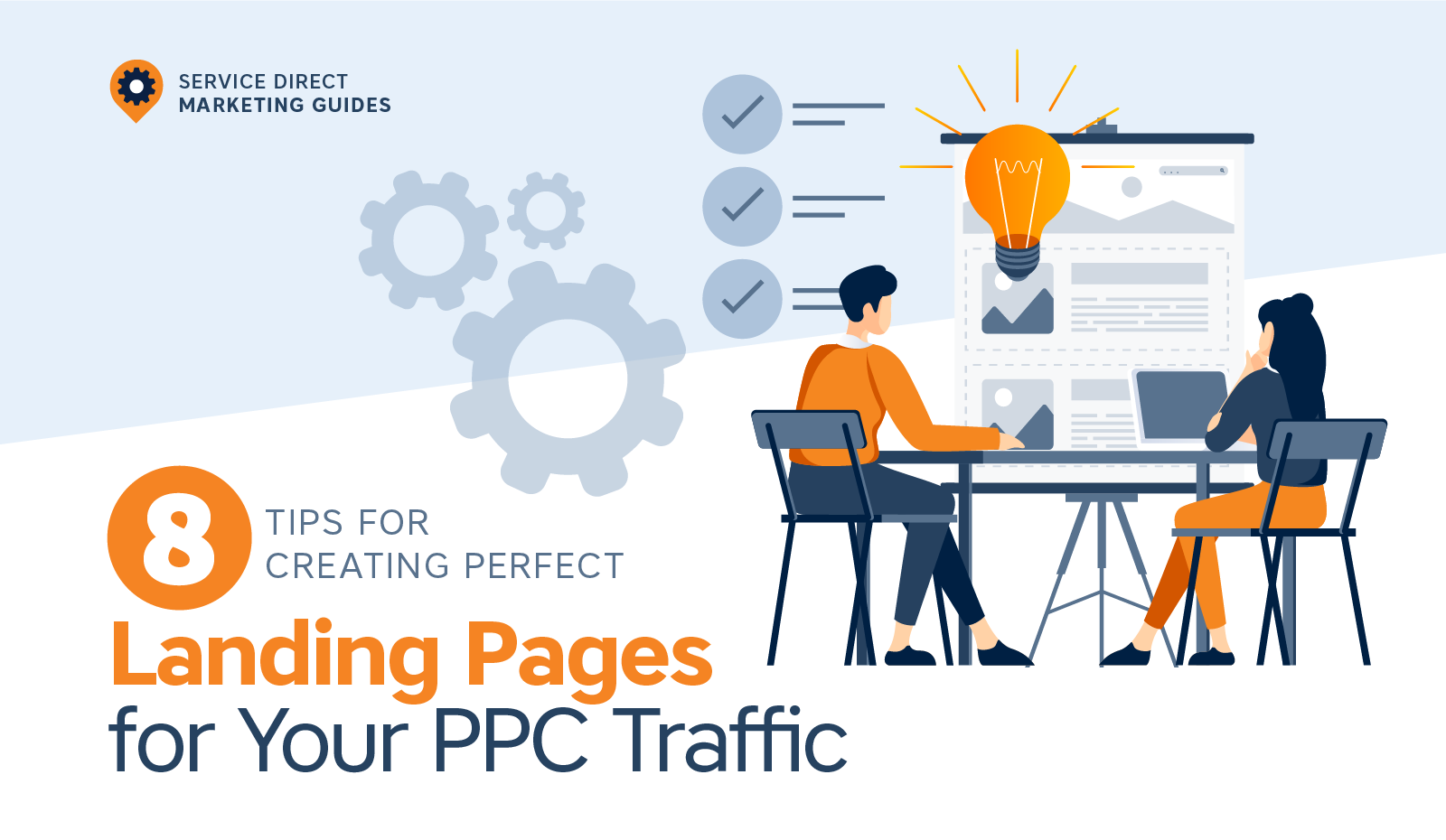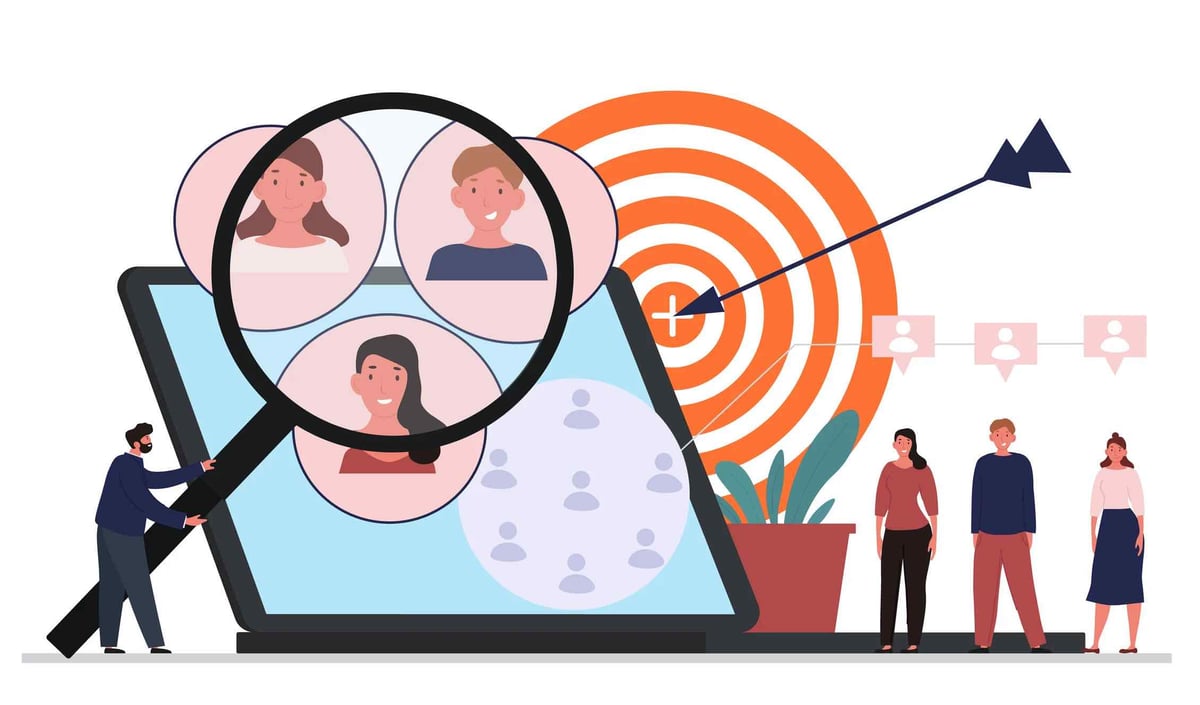8 Tips for Creating Perfect Landing Pages for Your PPC Traffic
If you're running a PPC campaign, it's important to ensure that your landing pages are effective. Many businesses neglect their landing pages, which can lead to decreased ROI and wasted advertising dollars.
In this article, we'll cover best practices for landing pages and how to track landing page performance. By following these tips, you'll be able to create high-converting landing pages that will help you achieve your marketing goals!
What is a Landing Page?
A landing page is a web page designed to convert visitors into leads or customers. It is typically distinct from the rest of a website and is often accessed through a pay-per-click (PPC) ad or an email campaign. The primary goal of a landing page is to encourage visitors to take a specific action, such as filling out a form or making a purchase.
A landing page is an effective way to generate leads because it allows you to capture the visitor's contact information. This way, you can follow up with the lead and turn them into a customer.
Landing pages are an essential part of any online marketing campaign. If you want to generate PPC traffic, you need to create a landing page.

How Do Landing Pages Help Your PPC Traffic?
They Increase Conversions
Landing pages are usually connected to a PPC advertising campaign and are designed to funnel PPC traffic towards a specific goal, such as making a purchase or signing up for a newsletter.
One of the main ways that landing pages help PPC traffic is by increasing conversions. A landing page that is well-designed and relevant can result in a higher conversion rate than a generic homepage.
Increasing conversions on landing pages can have a ripple effect on your entire PPC campaign. Not only will you get more leads, but you will also be able to reduce your cost per conversion. Landing pages can help you save money on your PPC campaigns while increasing leads and customers.

With close to 100% of small businesses using landing pages for their paid search marketing, you can't afford to miss out on this crucial tactic.
They Quickly Generate Data and Provide Actionable Insights
Insights generated from landing pages can help you understand what is working and what isn't. For example, if you see that a particular landing page is generating a lot of traffic but few conversions, you might consider rewording the messaging on the page to encourage more conversions.
Landing pages can be invaluable in increasing the effectiveness of your PPC traffic by providing data and insights that can be used to improve your campaigns.
With landing pages, you can make changes more quickly since they aren't integral pages on your website that might require weeks or months to plan changes.
They Improve Brand Awareness
By creating a landing page relevant to the user's search query, businesses can increase brand awareness and drive PPC traffic to their site with brief and compelling copy that highlights the company's or product's unique selling points. This can help to draw users in and create a more positive association with the brand.
Finally, landing pages can feature customer testimonials or reviews, which can help build trust and credibility. When done correctly, landing pages can be an extremely effective tool for improving brand awareness and driving PPC traffic.
They Increase Credibility
Landing pages can help increase the credibility of PPC traffic. This is because they provide users with a clear and concise view of what a business offers.
Landing pages can help build trust with potential customers by specifying the products or services being promoted. Focusing on a single message will come across as more credible than a website trying to sell multiple products or services.
In addition, landing pages can showcase customer testimonials or case studies, which helps to further establish credibility and expertise.
They Help Grow Your Email List
For businesses that rely on PPC traffic, landing pages are a crucial tool for growing their email list. By asking for an email address, landing pages can quickly and easily grow your list.
Ultimately, growing an email list allows businesses to capture leads and cultivate relationships with potential customers, which can eventually lead to sales.
Here are a few ways that landing pages can help you grow your email list:
- Provide an incentive - When you offer something valuable in exchange for an email address, people are more likely to sign up. Make sure your offer is something that your target audience will find valuable.
- Keep it simple - The less fields you require, the more likely people are to sign up. Just ask for an email address and perhaps a name so you can personalize your communications.
- Be clear and concise - Your landing page should be focused and to the point. Don't try to cram too much information onto the page or you'll lose visitors' attention.
- Analyze and test - Always be testing different landing page designs and offers to see what works best for your business. Use analytics to track conversion rates and make changes as needed.
By following these tips, you can maximize the potential of your landing page and grow your email list quickly and easily.
8 Best Practices for Effective Landing Pages
In business, first impressions are everything. When potential customers click on a landing page from a PPC ad, they should be immediately engaged by the content. If the landing page is confusing or poorly designed, that customer is likely to click away and never come back.

That's why it's so important for businesses to have a plan for their landing pages. By understanding best practices for effective landing pages, businesses can make sure they are making the most of their PPC traffic.
1. Understand your Target Audience
Targeting and testing correctly can increase conversions by 300%. So understanding your target audience is essential for creating landing pages that convert, and there are a few key methods for doing so.
First, consider who you want to reach with your landing page—what are their needs and wants? What are their pain points? Answering these questions by collecting data and sending out customer surveys will help you to create landing pages with messaging that resonates.
Next, take a look at your current landing pages and analyze their performance. Are they converting at the rate you'd like? If not, consider changing up the design or copy to better appeal to your target audience.
Don’t forget to use retargeting. Retargeting is a form of online advertising that allows businesses to show ads to people who have already visited their website. This is an effective way to target the right audience because it ensures that only people who are interested in what the business has to offer will see the landing page.
2. Design is Everything
When potential customers click on a landing page, they form an immediate opinion about the company based on the design of the page. A landing page that is cluttered and confusing will send customers away, while a clean and well-designed page will encourage them to stay and learn more.
In order to create an effective landing page, there are several things to keep in mind:
- The page should be designed with conversion in mind. That means the layout should be simple and easy to navigate, and the call-to-action should be prominently displayed.
- Use a landing page that is visually appealing. The use of high-quality images and videos can help to capture attention and convey information more effectively than text alone.
- Keep the most important information above the fold so your audience understands the goal immediately. When it comes to landing pages, less is more. Give them the info they need, and don't allow them to get lost in the weeds.
- Take advantage of white space. Keep your design clean and allow your readers to better comprehend your content.
- Use bullet points and short paragraphs to make your copy easy to digest. Long paragraphs of text will immediately cause the visitor to check out. Give them the info they need as concisely as possible.
- Perform a blink test to ensure information can be absorbed quicker than 5 seconds. If you can't immediately understand exactly what you want to get across to your visitor, they aren't going to understand it either.
By following these tips, businesses can create landing pages that are both effective and aesthetic, helping to convert more PPC traffic into customers.
3. Write A Captivating Headline
A landing page is the first impression potential customers have of your business, and you only have a few seconds to make a good impression. That's why it's so important to have a well-written headline that accurately reflects what your business does.

The headline is the most important part of your landing page, because it's what will determine whether or not someone clicks through to learn more about your business.
Here are a few tips for creating effective headlines:
- Keep it short and to the point. The headline should be clear and concise, and should communicate the main benefit of your offer. Address the problem and provide a solution.
- Use strong keywords that accurately reflect the content on your landing page. This will help ensure that people who click through to your landing page are actually interested in what you have to offer.- Use powerful words that evoke emotion.
- Test different headlines to see what works best. Try A/B testing different headlines to see which ones perform the best in terms of conversion rate.
- Don't be afraid to be creative! A clever and unique headline is more likely to capture attention than a bland and generic one.
4. Craft Compelling Copy
Think about the last time you clicked on an ad and were taken to a landing page. What made you stay on that page? Maybe it was the colors, the layout, or the headline. There's a good chance it was the compelling copy that convinced you to give the product or service a try.
Your landing pages need to be well-designed and have compelling copy that speaks to your target audience in order to get results.
Crafting compelling copy for landing pages is essential if you want to get results from your PPC campaigns. By following these tips, you can create landing pages that will convert more of your visitors into customers.
5. Create a Killer CTA
Landing pages are your chance to make a good first impression. That's why it's so important to have an effective call-to-action on your landing page. Your CTA is what tells visitors what you want them to do next - and if it's not effective, they're likely to bounce from your page without taking any action.

6. Optimize for Mobile
In the modern business world, it's essential to have a strong online presence. A key part of this is ensuring that your landing pages are optimized for mobile devices.
With more and more people using smartphones and tablets to access the internet, it's essential to make sure that your landing pages are designed with these devices in mind. Otherwise, you risk losing out on a significant amount of PPC traffic. In fact, 86% of the top landing pages are mobile-friendly.
There are a few key things to keep in mind when optimizing landing pages for mobile.
- Keep it simple. Mobile users are often looking for quick, easy-to-digest information
- Make use of landing page optimization tools to ensure that your pages are loading quickly and correctly on all devices. After all, up to 70% of website traffic comes from mobile devices. So use tools to test your mobile page load speed.
- Use analytics to track your results and adjust your strategy as needed. By following these tips, you can make sure that your landing pages are fully optimized for the mobile user experience.
7. Use Images and Videos
It's no secret that people are visual creatures. In fact, studies have shown that our brains process images 60,000 times faster than text. So it should come as no surprise that landing pages with images and videos are more effective than those without. In fact, using videos on landing pages can increase conversion by 86%.
But what makes an image or video effective on a landing page? The answer lies in psychology. Our brains are wired to respond to certain cues, and landing pages that trigger these cues are more likely to convert visitors into customers.
Here are some tips for creating efficient images and videos on landing pages:
- Use images and videos that are relevant to your product or service. If you're selling software, for example, use images of people using the software.
- Make sure the visuals are high quality. Poorly lit or pixelated photos will turn people off.
- Use images and videos that evoke positive emotions. If people feel good when they see your visuals, they're more likely to be interested in your product or service.
- Try to include human faces in your visuals. Our brains are hardwired to pay attention to faces, so including them in your landing page can be helpful.
- Ask yourself who your audience is—how old are they? What are they interested in? How do they dress? This information helps you use the right image that will captivate your audience.
- Finally, make sure your images and videos are mobile-friendly. More and more people are browsing the web on their phones, so it's important to make sure your landing page looks good on a small screen.
By following these tips, you can create visuals that will grab attention and help convert visitors into customers.
8. Test, Test, Test
It's important for businesses to test landing pages because they play a critical role in driving online conversions. Landing pages are designed to funnel PPC traffic towards a specific goal, such as making a purchase or signing up for a newsletter.
By testing different versions of landing pages, businesses can determine which designs and copywriting strategies are most effective in achieving their desired outcome. However, it's important to test landing pages effectively in order to get accurate results.

First, identify what you want to test. Are you wanting to try out a different CTA and see how it performs? Maybe you just upgraded your images and need to see how they’re performing. Have a clear idea of what you’re wanting to see performance from before you get started.
Testing should be carried out on a small scale at first, gradually increasing the sample size as more data is collected. Additionally, businesses should focus on testing one element at a time so that they can isolate the factors that have the biggest impact on conversion rates. This could be something like the headline, the call-to-action button, or the images on the page.
Then, create two versions of your landing page, with each version featuring a different element. Finally, send traffic to both pages and see which one performs better.
By following these guidelines, businesses can maximize the effectiveness of their landing pages and drive more online sales.
Landing Page Metrics to Track and How to Track Them
Landing Page Views
Landing page views give you an idea of how many people are actually seeing your page. By tracking landing page views, you can better understand how users interact with your site and improve your overall marketing strategy. Here are some tips on how to track landing page views:
Google Analytics. You can use Google Analytics to track landing page views for your whole website. This is a free service that gives you a lot of data about your website traffic, including where it's coming from, what pages people are landing on, how long they stay on each page, and more.
PPC Traffic. If you're running any kind of paid advertising, such as Google AdWords or Facebook Ads, you can track landing page views by setting up conversion tracking. This lets you see which ads are driving people to your website and how many people are clicking through to your landing pages.
Server Logs. If you have access to your server logs, you can also track landing page views by looking at the URL that people are coming from. This can be helpful if you're not using Google Analytics or if you want to see more detailed information about where your traffic is coming from.
Traffic Source
Traffic sources are the different places where users can come from before landing on your website. It lets you know where your visitors are coming from. There are many different traffic sources, but some of the most common include organic traffic (from search engines), direct traffic (from typing in your URL), and referral traffic (from links on other websites).
To track traffic source for landing pages, businesses typically use UTM parameters. UTM stands for "Urchin Tracking Module" and it helps to track the campaign source, medium, and other information about the visitor. This data can then be used to see which traffic sources are driving the most conversions.
Finally, you can use other tools to track traffic sources. For example, if you're using social media marketing, you can use a tool like Hootsuite to track the number of views and clicks for each post. By understanding which traffic sources are most effective, businesses can focus their efforts on driving more traffic from those sources.
Conversions
Conversions show you how many people are taking the desired action on your page. There are a few simple steps that businesses can follow to track conversion rates for landing pages.
First, businesses should choose the goal of their landing page. This will help them determine what metric to track. Once the goal is identified, businesses should add a tracking pixel to their landing page. You can use a landing page optimization tool like Optimizely to help.
A tracking pixel is a snippet of code that allows businesses to track visitors and measure conversions. Once the tracking pixel has been added, businesses should run traffic to their landing page. This can be done through paid advertising or organic means.
Once the page has received traffic, businesses can then measure the conversion rate by dividing the number of conversions by the total number of visitors.
If you're running a pay-per-click (PPC) campaign, you can also track conversions by setting up conversion tracking in Google AdWords. By following these simple steps, businesses can ensure that they are getting the most out of their landing pages.
Benchmarks
Benchmarks let you compare your landing page performance against others in your industry. There are a few different things that you can do to track benchmark rates for landing pages. One is to use Google Analytics to track how many people are landing on your page and what percentage of them are bouncing off (leaving without taking any action).
Another option is to use heat mapping software to see where users are clicking on your page and how far they scroll down. This can give you an idea of what areas of your page are most important and where you need to improve.
You can also track benchmark rates by looking at the click-through rate (CTR) of your landing pages. The CTR is a good indicator of how effective your page is at grabbing attention and getting people to take action. If you see a low CTR, it's likely that something on your page needs to be changed.
Finally, you can also ask users directly for feedback on your landing page. This can be done through surveys or by having a live chat on your page. Asking users for their honest opinion is always a good idea, as it can help you to identify areas that need improvement.
Overall, tracking benchmark rates for landing pages is essential for any business that wants to run a successful PPC campaign. By using Google Analytics, heat mapping software, and/or surveys, you can get a good idea of how your landing page is performing and make necessary changes accordingly.
Conclusion
Start using these tips to create effective landing pages and watch your conversions grow. By following the simple tips we’ve outlined in this blog post, you can create landing pages that are much more effective at converting your PPC traffic into leads and sales.
Remember to use strong images, persuasive copywriting techniques, and test your results so you can make continual improvements. With a bit of effort and some handy tools you can see a significant increase in your conversion rates and start generating more revenue from your online marketing campaigns.
Editor's Note: This blog was originally published in December 2022 and has been updated to reflect current trends and data.






